Speed Effect
EFEECT OF ADVANCE SPEED
The effect of ship speed is determined from tank test results in short waves.
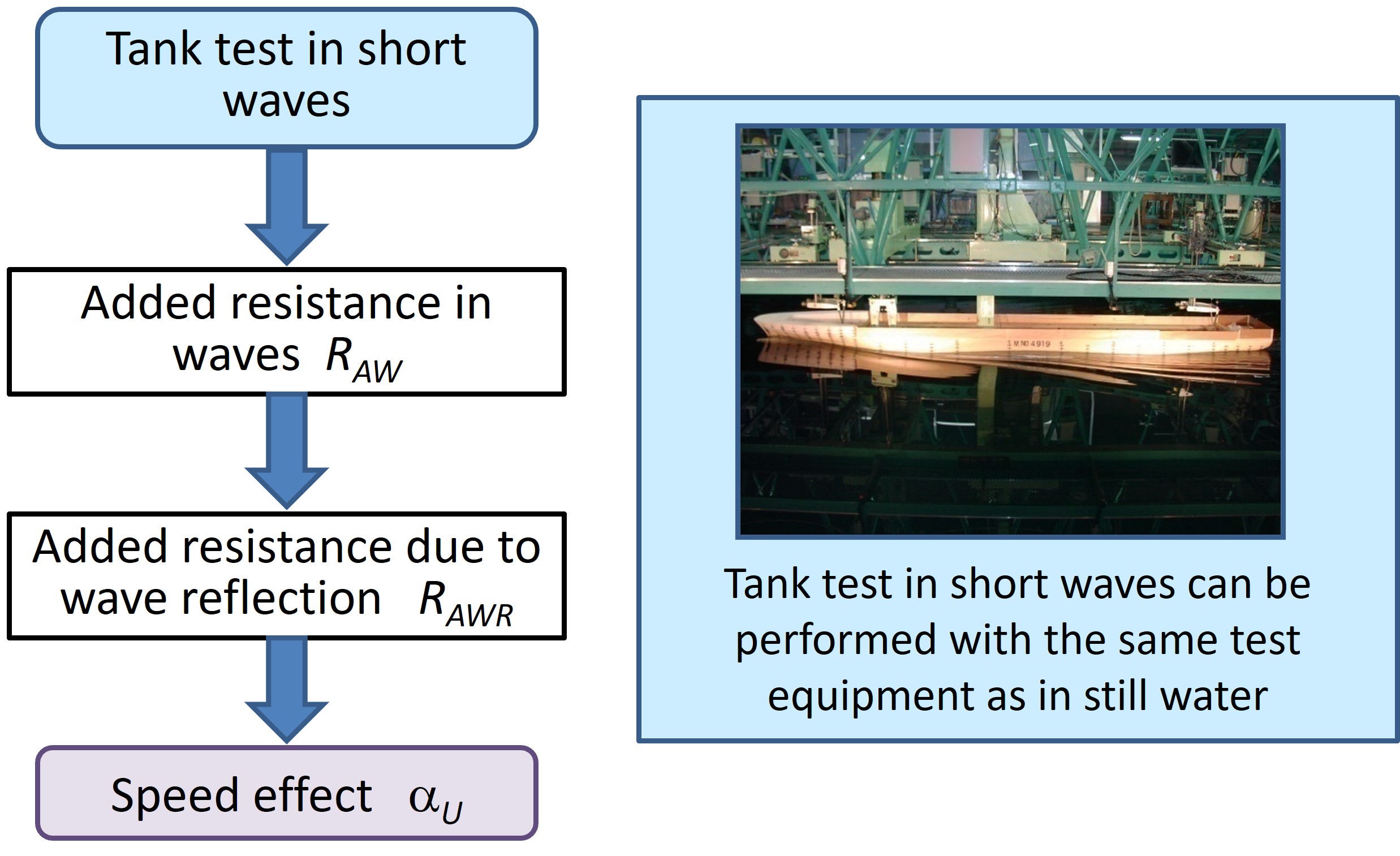
Flowchart for deriving speed effect
The effect of ship speed  is calculated from the following equation using the value
is calculated from the following equation using the value  of added resistance in waves obtained from the test.
of added resistance in waves obtained from the test.

 :Added resistance in regular waves obtained from the tank test
:Added resistance in regular waves obtained from the tank test
 :Added resistance in waves mainly due to motion as determined from the calculation
:Added resistance in waves mainly due to motion as determined from the calculation
 :The effect of draft and frequency obtained from the calculation
:The effect of draft and frequency obtained from the calculation
Operating speed of ship
・Container ships, car carriers:
・Panamax Bulk Carriers:
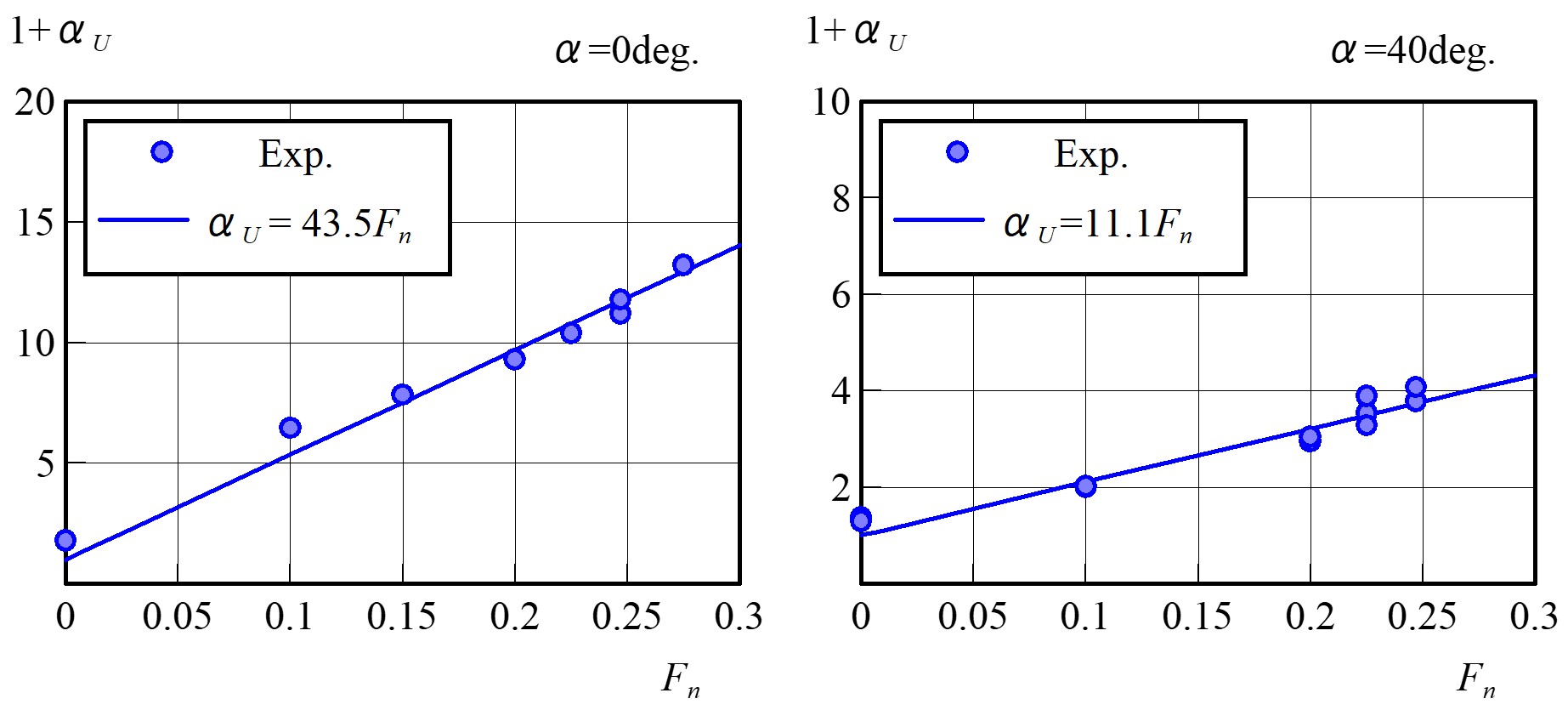
Container ship(ship length: 300m)
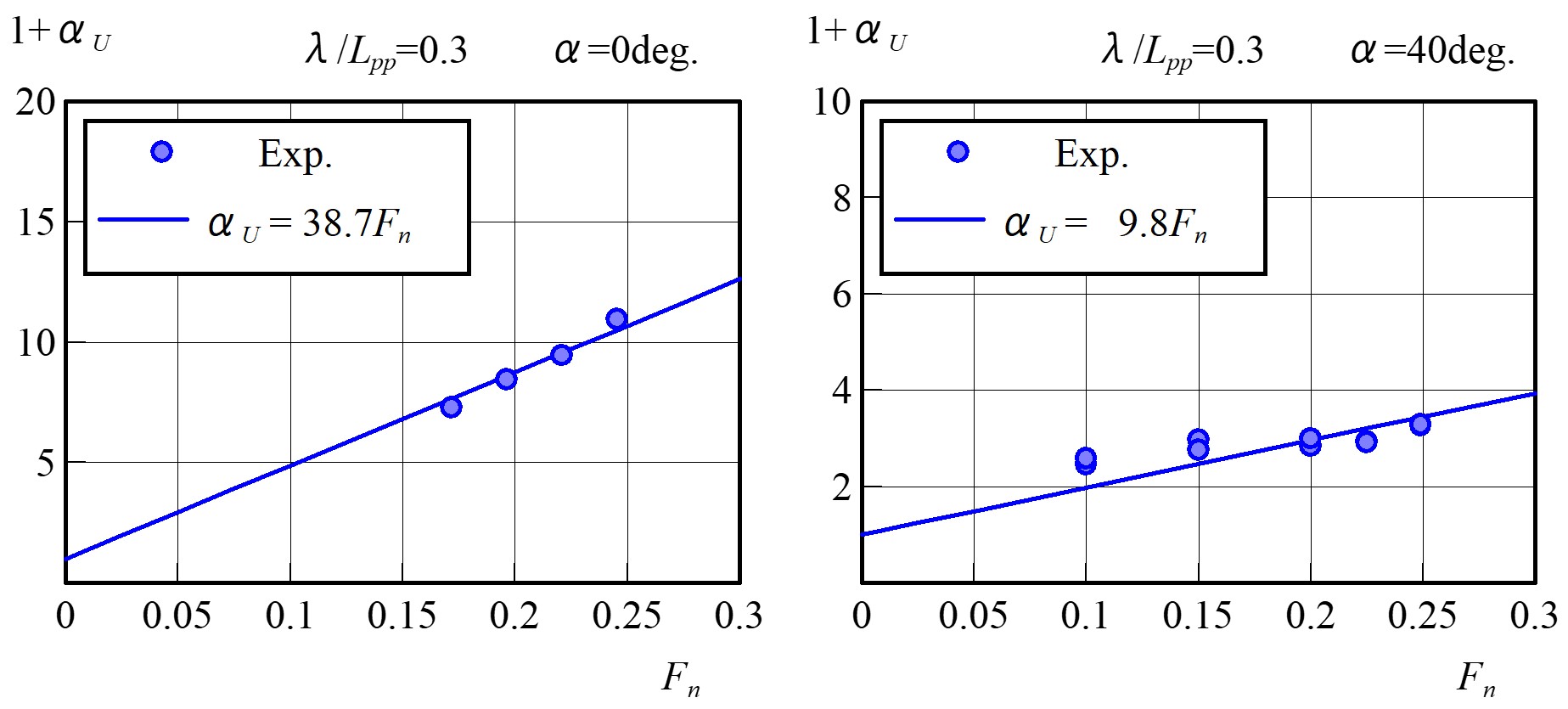
Car carrier(ship length: 190m)
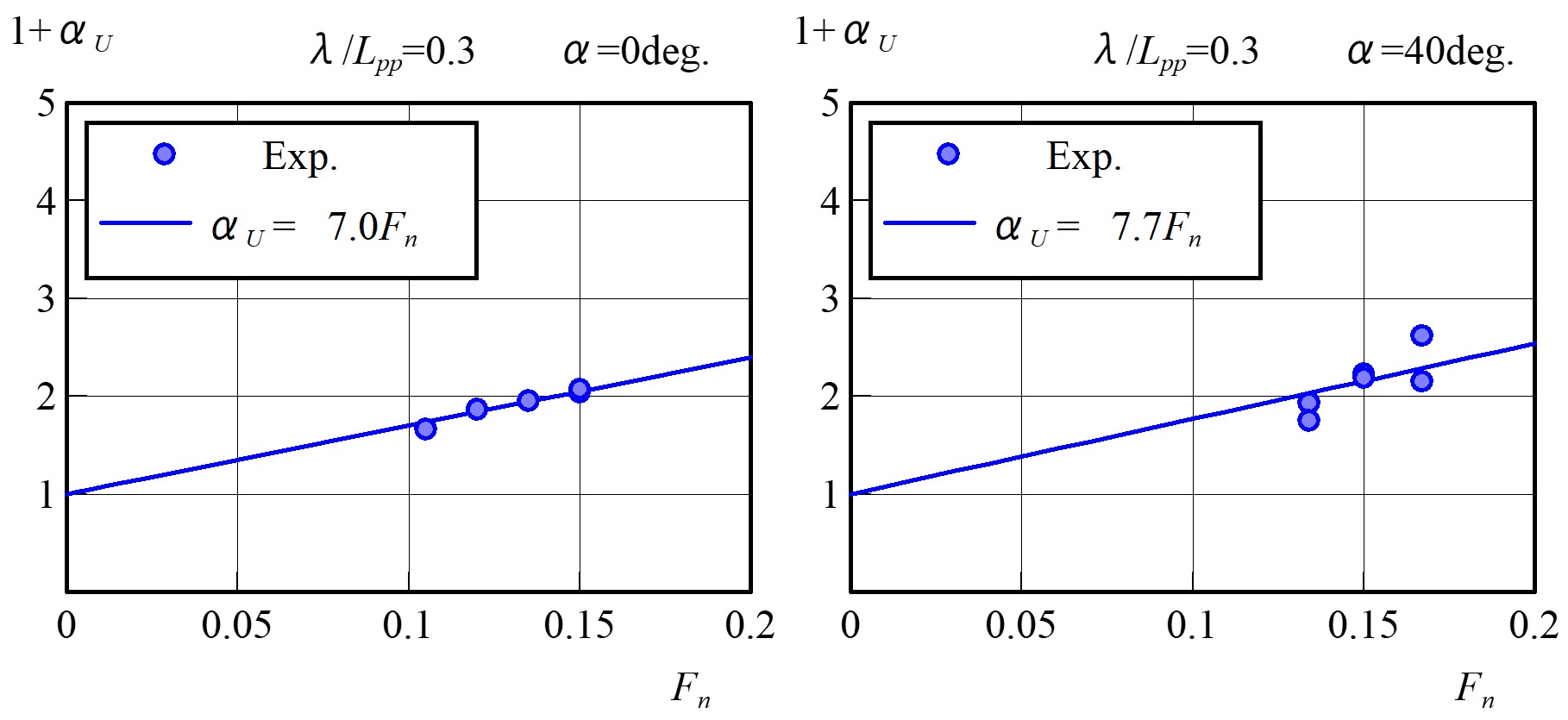
Panamax bulk carrier(ship length: 217m)
The coefficient  depends on the ship type and wave direction. The relationship between the coefficient
depends on the ship type and wave direction. The relationship between the coefficient  and the bluntness coefficient
and the bluntness coefficient  is obtained from the results of tank tests using model ships with practical bow in head and oblique waves.*
is obtained from the results of tank tests using model ships with practical bow in head and oblique waves.*
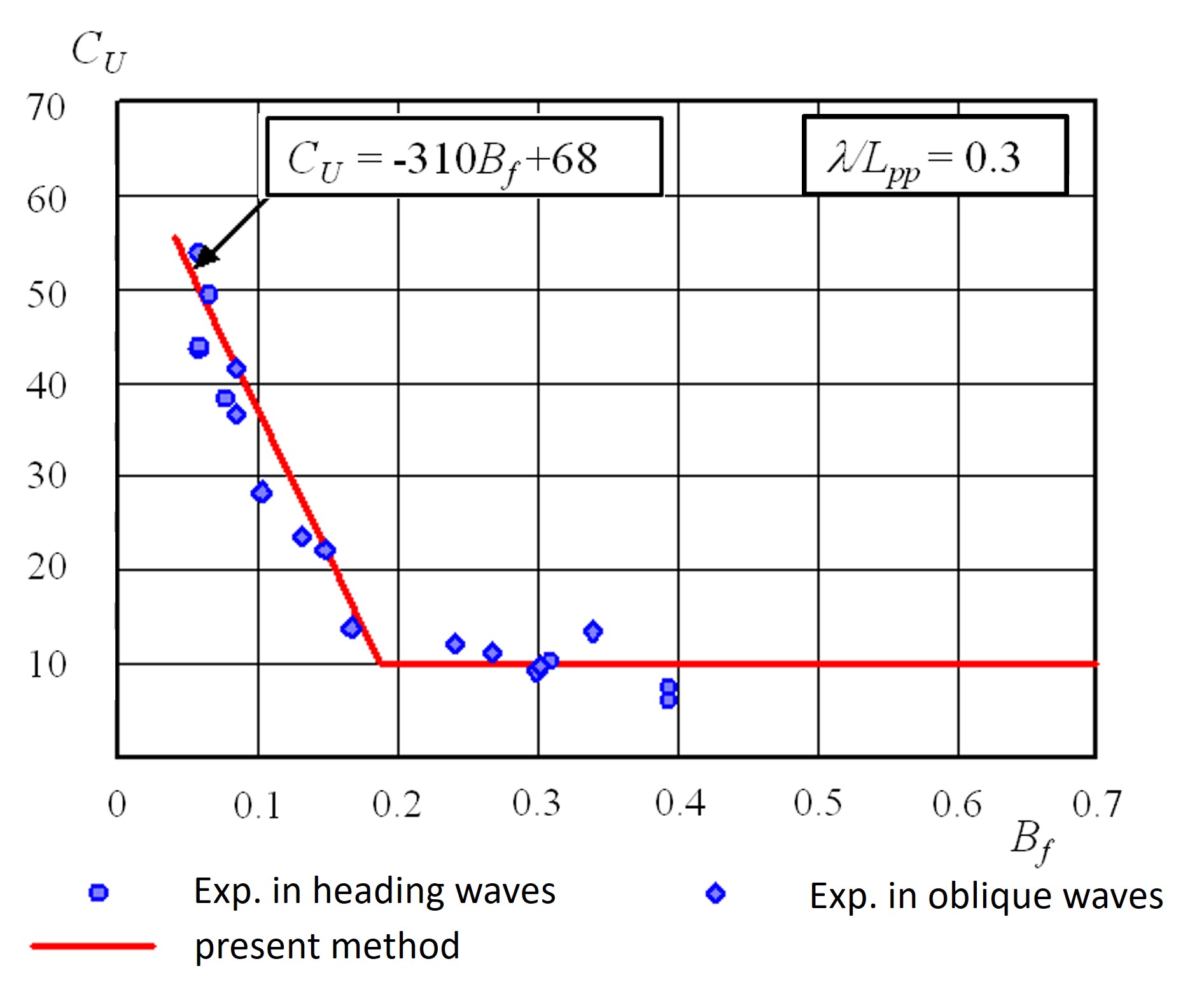
Relationship between velocity effect coefficient and bluntness coefficient
The solid line in the above figure is expressed in the following equations.


i) the case of  and
and 

ii) the case of  and
and 

Here, it is as follows.


 :Function symbol for the constant part
:Function symbol for the constant part
 :Function symbol for the inclined part
:Function symbol for the inclined part
 :Speed effect coefficients obtained from short crest mid-water tank tests
:Speed effect coefficients obtained from short crest mid-water tank tests
 :Bluntness coefficient in head waves
:Bluntness coefficient in head waves
*References
1) M. Tsujimoto, K. Shibata, M. Kuroda and K. Takagi:"A Practical Correction Method for Added Resistance in Waves", Journal of the Japan Society of Naval Architects and Ocean Engineers", Vol. 8, pp177-184, 2008.
2) Sogihara, N., Tsujimoto, M., Ichinose, Y., Minami, Y., Sasaki, N., and Takagi, K.: Performance Prediction of a Blunt Ship in Oblique Waves, Journal of the Japan Society of Naval Architects and Ocean Engineers, Vol. 12, pp9-15, 2010 (in Japanese).
